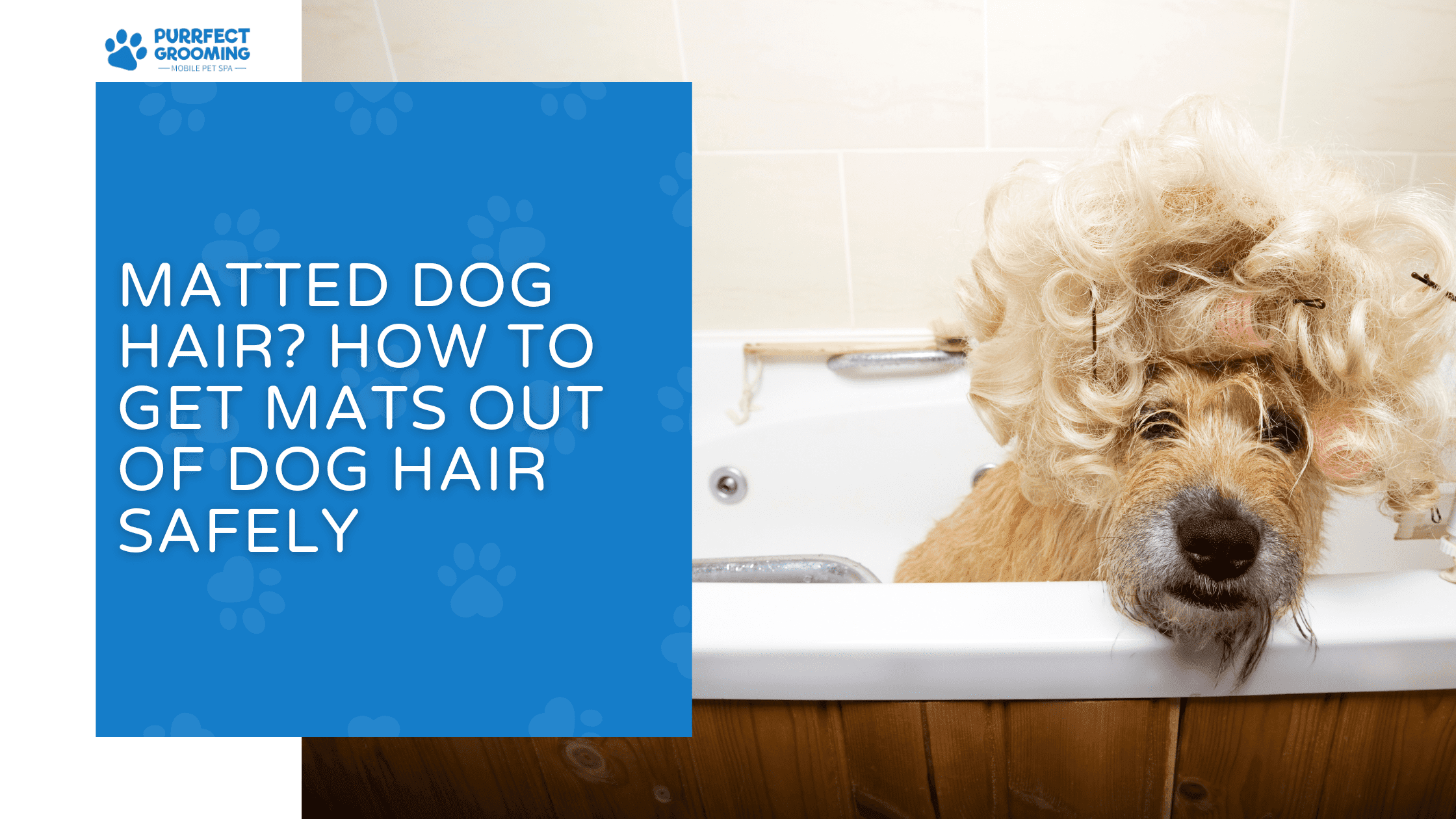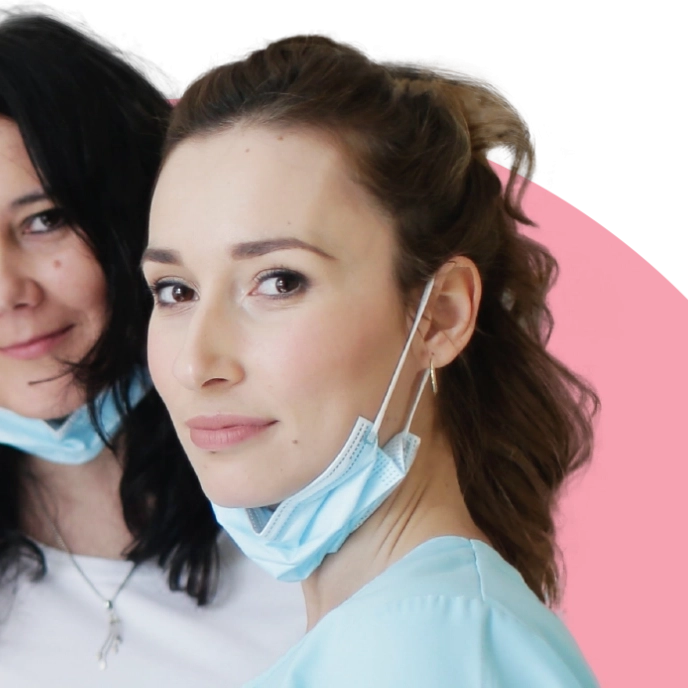Matted Dog Hair? How to Get Mats Out of Dog Hair Safely
If you’ve ever run your fingers through your dog’s fur only to find tough, tangled clumps, you’re not alone. Matted dog hair is a common issue, especially in breeds with long, curly, or double coats. While it might seem like just a cosmetic concern, dog matted fur can actually lead to serious discomfort, skin infections, and even restricted movement.
But why does dog hair get matted in the first place? Mats form when loose, shedding fur becomes tangled and knotted, especially in areas where there’s a lot of friction—behind the ears, under the legs, and around the collar. If left untreated, mats can pull painfully on your dog’s skin, trapping dirt, debris, and moisture, which creates the perfect breeding ground for bacteria and parasites. Severe cases of matting can even cut off blood circulation, leading to painful sores and infections.
According to the American Kennel Club (AKC), over 56% of dog owners have struggled with mats in their pet’s fur, proving that this is a widespread issue that every dog parent should be prepared to handle.
The good news? You don’t have to shave your dog every time mats appear! In this guide, we’ll explore how to get mats out of dog hair without causing discomfort, the best tools and techniques to use, and preventative measures to keep your furry friend’s coat smooth and tangle-free. Whether you’re a first-time dog owner or a seasoned pet parent, this comprehensive resource will help you tackle mats like a pro. Let’s dive in!
Why Does Dog Hair Get Matted?
Mats occur when loose hair tangles together and tightens into knots. Some common causes include:
- Moisture exposure (wet fur tangles easily)
- Lack of grooming (skipping regular brushing sessions)
- Friction (collars, harnesses, and frequent movement)
- Coat type (dogs with curly, thick, or double coats are more prone)
Breeds most prone to matted fur:
| Breed | Coat Type | Grooming Frequency Required |
| Poodle | Curly | Daily |
| Shih Tzu | Long | 2-3 times a week |
| Golden Retriever | Double | Weekly |
| Maltese | Silky | Daily |
Dangers of Matted Dog Hair
Ignoring dog matted fur can lead to:
- Skin infections (bacteria trapped under mats)
- Pain and discomfort (pulling on the skin)
- Restricted movement (tight mats around joints)
Tools You Need to Remove Mats
| Tool | Purpose | Best For |
| Slicker Brush | Removes loose fur | All coat types |
| Metal Comb | Detangles small knots | Long-haired breeds |
| Dematting Rake | Breaks up large mats | Thick-coated dogs |
| Dog-Safe Clippers | Cutting stubborn mats | Severe matting |
How to Get Mats Out of Dog Hair: Step-by-Step Guide
1. Prepare Your Dog
- Keep them calm with treats
- Choose a quiet place for grooming
2. Apply a Detangling Spray
- Spray the mat liberally
- Let it sit for 5 minutes
3. Use a Dematting Comb or Rake
- Start from the edges of the mat
- Use gentle, short strokes
4. Use Clippers if Necessary
- Never use scissors (risk of cutting the skin)
- Opt for pet-safe electric clippers
5. Reward Your Dog
- Offer a treat to make grooming a positive experience
Home Remedies for Dog Matted Fur
- Coconut oil: Softens mats for easier brushing
- Aloe vera gel: Reduces skin irritation from mats
- DIY detangling spray: Mix conditioner with water and spritz on the coat
Grooming Techniques to Prevent Dog Hair Matting
- Brush daily: Especially for long-haired breeds
- Use a leave-in conditioner: Prevents tangles
- Trim problem areas: Around ears, tail, and paws
Common Mistakes to Avoid
🚫 Cutting mats with scissors (risk of injuring your dog)
🚫 Skipping brushing sessions (leads to excessive matting)
🚫 Using human hair products (can irritate dog’s skin)
Best Products for Dog Matted Fur
| Product | Best For | Price Range |
| TropiClean Detangling Spray | All coats | $10-$15 |
| Hertzko Self-Cleaning Slicker Brush | Long fur | $15-$25 |
| GoPets Dematting Comb | Thick coats | $20-$30 |
When to Consult a Veterinarian
- If mats are too close to the skin
- If there’s redness, swelling, or sores
- If your dog is in visible pain
Pro Tip for Dog Owners
“Apply cornstarch to mats before brushing—it helps loosen the tangles and reduces pulling on your dog’s skin!”
Conclusion
Tackling dog matted fur doesn’t have to be a struggle. With the right tools, techniques, and preventative measures, you can keep your dog’s coat healthy and mat-free.
FAQs
1. How often should I brush my dog to prevent mats?
Long-haired dogs should be brushed daily, while short-haired breeds can be brushed weekly.
2. Can I cut out mats myself?
Avoid using scissors—opt for clippers to prevent accidental cuts.
3. What’s the best detangling spray for dogs?
TropiClean and Burt’s Bees detangling sprays are highly rated.
4. Are certain breeds more prone to matting?
Yes, breeds with long, curly, or double coats, like Poodles and Shih Tzus, are more prone.
5. How do I keep my dog calm while removing mats?
Use treats, a calming voice, and short grooming sessions to reduce stress.

